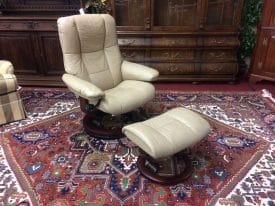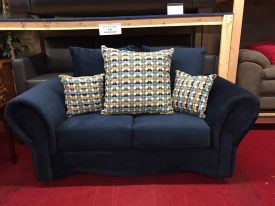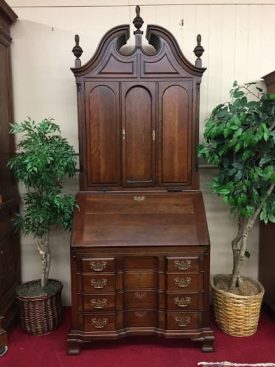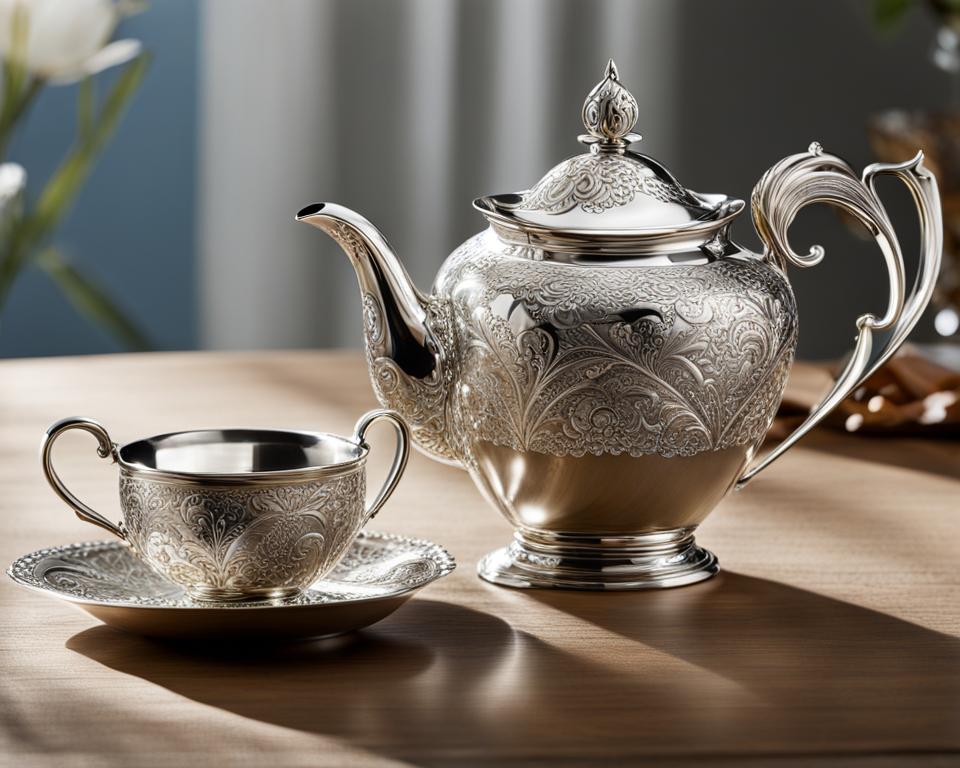When it comes to furnishing a dining space, the central piece is undoubtedly the dining table—a hub for gatherings, family meals, and cherished moments. But with an array of sizes, shapes, and styles available, how do you choose the right dining table size and shape for your space? It’s about striking a careful balance between form and function. Whether you’re navigating the options at dwell-known retailers like Target or browsing the curated collections at Crate & Barrel, key factors to consider range from ensuring a comfortable fit within your room to choosing a table that can withstand the rigors of everyday use. It’s crucial to remember that a dining table is not only a substantial financial investment but also an integral design element that shapes your dining area’s aesthetic.
Selecting dining table dimensions goes beyond mere numbers; it’s about envisioning the space as a whole and how it will be used. The best dining table size for your room is one that allows for ease of movement, suits your lifestyle, and stands the test of time – both in durability and style.
Key Takeaways
- Measure your space to ensure the dining table fits comfortably and complements the room.
- Choose a piece that balances durability with design, opting for a timeless look over fleeting trends.
- Budget-friendly choices from Target to high-end options at Crate & Barrel cater to differing financial plans.
- Consider the wear resistance and construction quality for long-term use and satisfaction.
- Ensure there is adequate space around the dining table for an unobstructed flow of movement.
- Remember that the table shape should enhance both the functionality and aesthetics of your dining area.
Understanding the Importance of the Right Dining Table
When setting the stage for countless meals and memories, the impact of selecting the perfect dining table cannot be overstated. The journey of choosing dining table shape for space, delving into a comprehensive dining table shape guide, and ultimately selecting dining table dimensions requires both insight and foresight. It entails consideration beyond the immediate appeal and delves into the essence of durability and design longevity.
Timelessness Over Trends
The quest for a dining table that transcends the ephemeral allure of trends leads us to embrace timeless design. A table should not only be a statement of personal style but also a testament to enduring appeal. Understanding that a dining table is a substantial investment means prioritizing a design that will continue to resonate and function impeccably as years go by. In the realm of home decor, it is an anchor piece, one that stands as the heart of the dining space and symbolizes consistency amid change.
Quality and Stability
To ensure comfort and lasting use, attention to quality and stability is paramount in the journey of bringing home a new dining table. Testing the sturdiness of a table is crucial—this is not an item that can be judged by looks alone. It is recommended to physically interact with possible choices, gauging their resilience and assessing the potential for wear over time. Resources like Wirecutter offer well-researched reviews, elevating the consumer experience by guiding them to options that marry robust construction with affordability—essentials when honing in on a piece that will endure life’s many moments shared around it.
Measuring Your Dining Area Accurately
When selecting the perfect dining table for your home, understanding the importance of accurately measuring your dining area is crucial. It’s not just about finding a table that fits; it’s also about ensuring there is enough space for people to move and gather comfortably. Whether you’re hosting a grand dinner party or enjoying a quiet family meal, the right dining table size and shape considerations can make all the difference.
Beyond Table Dimensions
The search for the ideal dining table goes beyond simply measuring its length and width. Considering the available area within your dining room calls for a careful evaluation of both the table’s dimensions and the surrounding space it occupies. Tips for picking dining table size and shape often emphasize the balance between the table’s physical size and its visual weight in the space, ensuring the room remains open and inviting.
Accounting for Clearance and Comfort
Comfort and accessibility around your dining area are essential, which is why dining table size dimensions must also account for clearance space. Sufficient room for chairs and walking space around the table ensures your dining environment is both functional and comfortable. The following guidelines can help you to measure the space more effectively:
- Maintain a minimum of 30 inches between the table and any walls or other furniture to allow for chair movement and seated guest comfort.
- Provide at least 48 to 49 inches of clearance from the table to any entryways or high-traffic areas, permitting easy passage even when chairs are occupied.
- Consider the size of the chairs that will accompany your table as well, allowing additional space for larger furniture pieces.
Taking these steps to measure your dining area with precision will ensure that your chosen table contributes to a harmonious and practical dining space, tailored perfectly to your home’s unique layout.
Selecting the Proper Dining Table Dimensions
When furnishing a dining room, the quest for selecting dining table dimensions that harmonize with room size as well as accommodate guests comfortably is a vital aspect of interior design. It is not just about finding a table that fits; it’s about discovering the best dining table size for the room – one that enhances both the functionality and the aesthetics of the space.
The Ratio of Table Size to Room Space
A balanced dining room layout manages to strike a perfect ratio of table size to room space, ensuring that the table complements rather than overwhelms the area. Appropriate spacing around the table is necessary to achieve an inviting atmosphere, where guests can move freely and comfortably.
Minimum and Optimal Size Considerations
While selecting table sizes, one must observe minimum and optimal spacing rules to ensure that the piece not just meets aesthetic standards, but is also practical. Below is a comprehensive guide outlining the standard dining table size dimensions alongside spatial recommendations for both intimate family dinners and larger gatherings.
| Seating Capacity | Minimum Table Size | Optimal Table Width | Room Size Suggestion |
|---|---|---|---|
| 2-4 People | 36 inches square | 40 inches wide | 10 x 10 feet |
| 4-6 People | 48 x 36 inches | 36-42 inches wide | 12 x 12 feet |
| 6-8 People | 60 x 36 inches | 36-48 inches wide | 14 x 14 feet |
| 8-10 People | 72 x 36 inches | 36-48 inches wide | 16 x 16 feet |
Take note that, apart from these minimum and optimal size considerations, leaving about 42-48 inches between the table and walls or any other furniture ensures a snug yet spacious dining area. Always keep in mind the distance needed for chair pull-out and diner circulation when selecting dining table dimensions. The right proportions can transform your dining space, making it the heart of the home.
Choosing Dining Table Shape for Space
When it comes to making the best use of your dining area, the shape of the table you select plays a pivotal role. A comprehensive dining table shape guide suggests that the interaction between room layout, functionality, and aesthetics cannot be overlooked. For those choosing a dining table shape for a space, it’s important to first consider the dynamics of the room. Are you working with a traditional long space, or is it a cozy square nook?
Rectangular and oval tables are the go-to shapes for classic elongated dining rooms, offering ample space and fitting nicely into the room’s conventional flow. They easily accommodate a larger number of guests, showcasing why they remain the standard for the best dining table size for a room that’s spacious. On the other hand, square and round tables are gaining popularity in urban homes where space is at a premium. These shapes provide a sense of intimacy and equality, as each diner is equidistant from the center.
For the more adventurous decorator or those with irregularly-shaped rooms, exploring unique table shapes could lead to an exciting highlight for your dining space. However, be mindful that atypical shapes may present practical challenges during meal service or when attempting to maximize seating capacity. Before finalizing your decision, consider how your table shape will affect the flow of conversation and interaction among diners.
Remember, the dining table is often more than a piece of furniture — it’s a gathering place for friends and family, a hub for discussion, and a vital component in making meals memorable.
- Rectangular/Oval Tables: Ideal for traditional, long dining spaces
- Square Tables: Suited for smaller or square-shaped rooms
- Round Tables: Perfect to create a sense of intimacy; best for compact spaces
- Irregular Shapes: Offering a unique aesthetic, but may influence diner interaction
In conclusion, selecting the right dining table shape extends beyond mere personal preference. It’s about making a choice that complements your room’s architecture, aligns with your lifestyle, and stands the test of time while ensuring comfort and functionality.
The Significance of Dining Table Shapes
Exploring the choosing dining table shape for space is more than just a matter of style—it’s about crafting an atmosphere that enhances comfort and interaction among diners. The chosen shape of your dining surface not only influences the practical aspects of mealtime but also the social dynamics that unfold around it. In understanding the significance of dining table shapes, one must consider how each shape contributes to the flow and function of the dining experience.
Rectangular and Oval Tables
Rectangular and oval tables stand as the paragons of versatility. They typically provide more seating capacity, making them an excellent choice for those who frequently host larger gatherings. However, size and dining table size and shape considerations come into play to prevent discomfort; widths exceeding 160 cm may hinder conversation across the table. It’s crucial to balance spaciousness with intimacy to ensure that the table facilitates rather than hinders interaction.
Square and Round Table Dynamics
The dynamics of square and round tables bring forth a sense of equality and closeness, as they allow every diner to engage effortlessly with one another. These shapes are ideal for smaller groups and spaces, promoting an intimate setting where conversation can flow naturally. The dining table shape guide suggests not exceeding a 2-meter diameter for round tables to maintain this comfort in interaction. A thoughtfully chosen table shape harmoniously blends with the room’s aesthetics and elevates the dining room’s ambiance.
Determining Dining Table Size for Your Guests
When it comes to hosting guests, the comfort provided by your dining table is paramount. This goes beyond mere aesthetics to include practical considerations of dining table size dimensions and seating capacity. The goal is to create a space that accommodates your guests without crowding, ensuring a pleasant dining experience for all.
Space per Person
Individual space is a crucial element to consider when determining dining table size and shape. A standard guideline is to provide at least 20 inches of space per person to avoid a cramped setup. However, for optimal comfort and ease of movement, aim for 24 to 30 inches. This allows everyone to dine without elbowing their neighbors and enjoy the meal in a relaxed environment.
Seating Capacity and Table Proportions
The size and shape of dining tables are defined not only by the room they occupy but also by their ability to serve guests effectively. Seating capacity should be integrated with table proportions, considering the necessary depth for place settings and the convenience of reaching central items. To illustrate how seating capacity can be matched with table dimensions, refer to the table below showcasing the relationship between table size, shape, and seating capacity:
| Table Shape | Recommended Size | Seats | Space per Person |
|---|---|---|---|
| Rectangular | 72 x 36 inches | 6 people | 24 inches |
| Round | 48 inches diameter | 4 people | 24 inches |
| Oval | 84 x 42 inches | 8 people | 24 inches |
| Square | 48 x 48 inches | 4 people | 24 inches |
Dining table size and shape considerations should be thoughtfully addressed to ensure each person at the table feels accounted for. Chair size, particularly chairs with armrests, may necessitate additional space. As a result, it’s important to tailor your dining table dimensions to accommodate these aspects for a truly hospitable dining room setup.
Dining Table Size Dimensions Explained
When it comes to furnishing a dining space, understanding the dining table size dimensions is essential for balancing both aesthetic proportion and comfort. Whether you’re moving into a new home or simply updating your current dining area, the choice of your table’s size and shape has a significant impact on the room’s functionality and overall appeal. Knowing the best dining table size for your room can make all the difference in creating an inviting space where guests feel at ease.
To help you choose the right dining table size and shape for your space, here’s a guide to the recommended minimum sizes for various seating capacities:
| Seating Capacity | Rectangular/Square Table Size | Round Table Diameter |
|---|---|---|
| 2 People | 32 inches square | – |
| 4 People | 48 x 36 inches | 36 inches |
| 6 People | 60 x 36 inches | 52 inches |
| 8+ People | 92 x 40 inches | – |
It’s crucial to keep in mind that while these dimensions are a great starting point, every dining room is unique. Consider the shape and size of your room, any other furniture you might need to accommodate, and how the table will be utilized daily. An oversized table in a small room can make the space feel cramped, while a table too small may seem dwarfed and underutilized in a large room.
For those who often host larger gatherings, a table with the ability to extend could be the best dining table size for your room. Extendable tables offer flexibility: compact for daily use, with the option to expand for special occasions. As a rule of thumb, ensure there’s ample space around the table for guests to move comfortably, with ideally at least 36 inches from the table edge to surrounding walls or furniture.
- Assess the size of your dining room
- Determine how many people you plan to seat regularly
- Allow for additional space around the table for movement
- Consider an extendable table for versatility
By taking into account these considerations, you will not only create an elegant dining space but also ensure it serves its purpose of gathering friends and family for comfortable, memorable meals.
How do you choose the right dining table size and shape for your space?
When embarking on the journey to find the perfect dining table, start by considering the dining table size and shape considerations. The space where you’ll be placing your dining table largely dictates its ideal size and shape. Here are some tips for picking dining table size and shape to guide you through the selection process:
- Measure the dining area: Knowing the exact dimensions of your dining space is essential. It’s not just about the length and width of the room but also accounting for doorways, walkways, and any other furniture items that share the space.
- Analyze room shape: A square room might lend itself better to a round or square table, while a rectangular space might be suited for a rectangular or oval table. The goal is to select a shape that complements and flows with the room’s inherent geometry.
- Plan for movement: Allow for at least 36 inches between the dining table and walls or other furniture. This ensures guests can move around easily, making the dining experience more comfortable and accessible.
- Consider the number of guests: Think about how many people will be using the table on a regular basis, as well as accommodating additional guests for special occasions.
Here’s a table that displays recommended dimensions based on the number of guests:
| Number of Guests | Rectangular / Oval Table Size | Round Table Diameter |
|---|---|---|
| 4 | 48 x 30 inches | 36 inches |
| 6 | 60 x 36 inches | 48 inches |
| 8 | 78 x 36 inches | 60 inches |
| 10 | 96 x 48 inches | 72 inches |
When thinking about how do you choose the right dining table size and shape for your space, visualize your dining area as a fluid environment, where the dining table not only serves as the focal point for meals but also as a center for social interaction and daily activities. Keeping in mind these guidelines helps ensure that your selected dining table enhances the function and aesthetic of your dining space.
Maximizing Small Dining Spaces with the Right Table
When it comes to small dining spaces, the key to creating a functional and inviting area is selecting the best dining table size for the room. The use of extendable, foldable, or drop-leaf options offers unparalleled flexibility, adapting to various occasions without compromising valuable space. Understanding the subtle art of furniture selection is essential in these scenarios. Therefore, how do you choose the right dining table size and shape for your space? The answer lies within a dining table shape guide, showcasing various forms and their effective use in tight confines.
In an effort to make smaller rooms appear more spacious, the incorporation of slender designs and compact shapes is advised. Round tables, for example, can significantly enhance the sense of openness while facilitating better flow throughout the dining area. To assist further, below is a concise guide on various table shapes and their dimensions, which are particularly suited for small spaces:
| Table Shape | Dimensions | Seats Accommodated |
|---|---|---|
| Extendable Rectangular | 30-40 inches by 50-70 inches | 4-6 (extends to 6-8) |
| Drop-Leaf Round | 28-36 inches diameter | 2-4 |
| Foldable Square | 30-36 inches square | 2-4 |
Each of these options demonstrates how well-designed furniture can maximize small dining spaces, whether that’s through a circular table that softens the layout, or an inventive foldable piece that simplifies spontaneous adjustments. Properly measuring your space before committing to a purchase is essential to ensure alignment with the room’s capabilities and your lifestyle needs. Small dining areas, contrary to popular belief, can be transformed into beautifully efficient spaces where function and comfort coexist harmoniously.
The Impact of Room Shape on Table Selection
When outfitting a dining space, the geometry of the room plays a pivotal role in guiding the choice of dining table shape. This decision not only impacts the visual harmony but also the practical functionality of the space. Understanding how to choose the suitable dining table shape for space can transform the dining area into an inviting and efficient environment.
Matching Table Shapes with Room Geometry
Selecting the ideal dining table shape that reflects the room’s geometry is a clever design strategy that can enhance the cohesion of a space. A circular table, for example, may be the perfect complement to a square room, naturally fitting into the flow of the surroundings and making effective use of the available space.
Optimizing Flow and Accessibility
While aesthetics are important, the flow and accessibility of the dining area are paramount in a well-designed room. The dining table size and shape considerations should extend beyond simple measurements to include how individuals interact with the space around the table, ensuring seamless movement and comfort for all users. Strategic table placement and shape selection can substantially improve the room’s overall feel, highlighting why a dining table shape guide is a valuable resource for homeowners and designers alike.
Considerations for Multi-functional Dining Tables
As modern homes increasingly embrace versatile living spaces, the demand for multi-functional furniture has soared. Dining tables that offer flexibility for dining, working, and leisure activities represent a smart investment for those looking to optimize their interiors. Whether one is outfitting a cozy breakfast nook or furnishing a spacious living-dining area, thoughtful considerations on dining table size and shape are crucial to making the most of the space available.
Tables for Dining and Work
In the quest for maximizing small dining spaces, discerning homeowners are turning to tables that serve multiple purposes. The challenge lies in selecting a table that can comfortably transition from a place to enjoy meals to a workstation. When evaluating options, ease of movement around the table is paramount, ensuring that it accommodates both casual dining and productive work sessions without compromising on either function.
Storage and Expanded Utility
The integration of storage solutions into dining tables can significantly enhance functionality, allowing for a clutter-free area that adapts to various needs throughout the day. For example, hidden compartments or shelves can store work materials or dining accessories, effectively maximizing the utility of limited square footage. To further assist homeowners in choosing the right furnishings, the following table highlights key features and dimensions for popular multi-functional dining tables.
| Table Type | Dimensions (L x W x H) | Key Features |
|---|---|---|
| Expandable Console | 40″ x 20″ x 30″, extends to 70″ | Space-saving design, extendable for larger gatherings |
| Drop-leaf | 36″ x 36″ x 30″, drop-leaf down 36″ x 24″ | Adjustable surface area, ideal for tight spaces |
| Storage Table | 48″ x 30″ x 30″ | Built-in drawers/shelves, multi-purpose |
| Bar-height Table | 52″ x 24″ x 36″ | Elevated dining/work surface, contemporary style |
For those seeking to further add value to their dining spaces, consulting design guides and leveraging tips for picking dining table size and shape can make a world of difference. By selecting a table that mirrors the practical demands of modern life, homeowners can transform ordinary spaces into dynamic areas that thrive on multiplicity and charm.
Tips for Picking Dining Table Size and Shape
Selecting the perfect dining table for your home revolves around more than simply aesthetics; it’s a blend of functional foresight and spatial awareness. The following guidance focuses on essential dining table size and shape considerations to help you choose a table that’s both beautiful and accommodating to your needs.
When considering tips for picking dining table size and shape, start by assessing the room’s dimensions. A rule of thumb is to maintain a clearance of 36 inches between the table’s edges and the walls or any other furniture, securing enough space for guests to maneuver comfortably.
- Measure your dining area to ensure the table will fit with ample space to walk around.
- Plan for each diner to have about 20 to 24 inches of table space for comfortable seating.
- Account for the dining chairs – larger chairs require a more spacious table configuration.
Selecting the shape of your dining table is equally pivotal. A dining table shape guide can assist in deciding which form complements your dining area’s dimensions and enhances functionality. Consider the types of gatherings you host and how you want guests to interact. Round tables promote conversation, while rectangular tables may suit elongated rooms better.
- Round or square tables are ideal for fostering a sense of intimacy and facilitating group discussions.
- Rectangular or oval tables can comfortably accommodate more guests and fit well in longer rooms.
- Remember future changes in lifestyle or family size that might influence your table requirements.
Embrace these insights as you weigh the practical aspects of daily dining against aesthetic inclinations. The end result should yield a harmonious blend of form and function, culminating in a space where meals and memories are both richly savored.
Best Dining Table Size for Room Proportionality
When it comes to selecting dining table dimensions, achieving the ideal balance between the piece and your dining room’s overall aesthetic is critical. The process to choose the right dining table size and shape for your space starts with understanding the room’s specific proportions and how a table will fit within them. This guide helps pinpoint the best dining table size for room proportionality, ensuring your dining area feels both spacious and inviting.
Before making a selection, it’s essential to consider all aspects of the room, such as other furniture and the walking space needed for ease of movement. A well-proportioned table acts not only as a focal point but also harmonizes with the surroundings, enhancing the overall flow of the space. Here’s a practical breakdown on how to coordinate dining table size with room dimensions for a perfectly proportioned dining area:
- Measure the length and width of your dining room.
- Subtract at least 36 inches from each measurement to ensure ample space for chairs and walkways.
- The remaining dimensions will give you maximum table size for comfortable navigation around the room.
After acquiring the maximum table dimensions for your dining area, you can tailor your selection to the desired aesthetic and functionality. Remember, the chosen table should allow for comfortable guest interaction, not just in terms of physical space but also visually. It should invite people into the space rather than overwhelming it.
Advice from Design Experts on Table Sizing
When it comes to selecting the ideal dining table for your home, design experts emphasize the art of marrying function with form. The process of determining dining table size and shape requires not just an eye for aesthetics but also a practical approach to space management. By adhering to established industry guidelines and standards, homeowners can ensure their dining space invites both comfort and style.
Industry Guidelines and Standards
Industry leaders often suggest that a dining table should occupy approximately one-third of the dining area. This standard ensures the table is proportional to the room, allowing for ease of movement and ample space for guests. Ensuring there is enough clearance around the dining space, typically around 36 inches, avoids a cramped environment and facilitates a pleasant dining experience.
Designer Perspectives on Dining Table Aesthetics
From a designer’s point of view, the dining table shape guide goes beyond mere dimensions; it taps into the realm of aesthetics and how a table’s shape can influence social interaction. A well-chosen table has the power to anchor the room’s decor, encouraging a sense of togetherness. Selecting dining table dimensions doesn’t end with fitting a space; it’s also about complementing the visual narrative of your home.
| Room Size | Table Dimension Recommendations | Seating Capacity | Guideline Notes |
|---|---|---|---|
| Small (10′ x 10′) | 48″ x 30″ | 4 people | Opt for round or square tables to enhance conversation. |
| Medium (12′ x 12′) | 72″ x 36″ | 6 people | Rectangular tables work well, leaving ample thoroughfare space. |
| Large (16′ x 16′) | 96″ x 48″ | 8-10 people | Larger tables require more width for centerpieces and communal dishes. |
Conclusion
In the journey to find the perfect dining table, homeowners are often guided by the questions: How do you choose the right dining table size and shape for your space? The answer weaves together a tapestry of considerations, including meticulous evaluation of dining room proportions, the anticipated number of guests, and the table’s functionality in everyday life. It’s a delicate balance where style meets substance, ensuring that the chosen piece not only complements the aesthetics of a space but also stands the test of time as a central hub for gathering and nourishment.
When pondering dining table size dimensions, the role of adaptability and quality craftsmanship cannot be overstated. A piece that exudes elegance while offering resilient functionality enhances the dining experience, morphing from a mere furniture item to a central feature of the home. Tips for picking the dining table size and shape revolve around practicality ensconced in timeless design, advocating for a selection that promises to enhance life’s daily routines and cherished moments.
Ultimately, forging an inviting and cohesive dining environment is about more than just physical measurements—it’s about creating a space that resonates with warmth and welcome. By heeding expert advice and embracing versatile designs that cater to an array of occasions, homeowners can establish a focal point in their home where conversations flow, memories are made, and the joy of shared meals lingers long after the last bite is savored.
FAQ
How do you choose the right dining table size and shape for your space?
To choose the right dining table size and shape, consider the room’s size, layout, and the number of people you wish to seat. Ensure ample space for chairs and movement behind them, accounting for room geometry and desired functionality. Prioritize timeless design over trends and focus on quality and stability. Measure your space and reference industry guidelines to find an option that balances aesthetics, comfort, and proportions.
What is more important for a dining table: Timelessness or trendiness?
Timelessness is generally more important than trendiness for a dining table. As an investment piece intended for long-term use, a timeless table will maintain its style and functionality through the years. This approach ensures lasting satisfaction and mitigates the need for frequent replacements due to changing trends.
Why is measuring your dining area important when selecting a table?
Accurate measurements of your dining area help ensure the table fits comfortably within the space, providing enough clearance for chairs and pedestrian traffic. Proper measurement prevents the overcrowding of the area and maintains a balanced room proportion. Additionally, it helps determine the most functional table shape for your space.
How much room should there be around a dining table?
A minimum of 30 inches of space is recommended from the dining table to any obstruction to allow room for chairs and movement behind them. Near doorways or thoroughfares, it’s sensible to leave approximately 48 inches of clearance to ensure easy passage.
What are the ideal dimensions for a dining table based on room size?
Ideal dining table dimensions are influenced by the size of the dining area and the number of potential guests. The table should allow for at least 20 inches of dining space per person and should not exceed 180 to 200 cm from walls or furniture to prevent crowding. Always consider the balance between the table size and the room proportions to maintain aesthetic harmony.
How do the room’s layout and intended use affect the choice in dining table shape?
The room’s layout and how you plan to use the space are crucial factors in selecting a table shape. Rectangular and oval tables suit traditional spaces and larger gatherings, while square or round tables work well in compact areas and help facilitate conversation. The choice should accommodate dining comfort, flow of traffic, and complement the room’s overall design.
What are the considerations for space per person at a dining table?
It is recommended to provide at least 20 inches of space per person at a dining table. For optimum comfort, consider offering 24 to 30 inches per guest. Also, factor in the size of chairs, especially if they include armrests, to ensure everyone is seated comfortably without feeling cramped.
How does table shape impact dining experiences?
Table shape significantly affects how guests interact during a dining experience. Rectangular and oval tables are suitable for large groups but may limit conversation across the table if too wide. Round and square tables encourage more intimate and engaging dining experiences, although their size should be kept manageable to avoid communication difficulties.
What minimum and optimal size considerations should be taken into account when selecting dining table dimensions?
Consider the minimum size required for comfort and the desired capacity. For example, a 32-inch square table suits 2 people, and a table 48 x 36 inches is ample for 4 people. For better comfort, allow more than the bare minimum space, ensuring guests have enough room to dine without feeling crowded.
How can I maximize the functionality and comfort of a small dining space?
In small dining spaces, consider space-saving tables such as extendable, foldable, or drop-leaf styles. Opt for slender designs or go with round tables that can help the room feel larger. Ensure to measure precisely and select proportions that help enhance the space’s functionality without overcrowding it.
How do multi-functional dining tables benefit modern living?
Multi-functional dining tables cater to the versatile needs of contemporary living by serving as spaces for dining, work, and leisure activities. Look for tables offering storage options, expandable designs, or additional features that seamlessly integrate into living areas and contribute to a practical, efficient lifestyle.
What tips can be useful when picking dining table size and shape?
When picking a dining table size and shape, be mindful of the existing space, consider the number of guests you plan to accommodate, and maintain a balance between the table and room size. Select shapes that enhance conversation and fit well with the space’s configuration, and always plan for the future usage of the room.
What do design experts suggest regarding dining table size proportionality?
Design experts suggest that a dining table should generally occupy about one-third of the dining space, with enough clearance for functionality and aesthetics. The table should complement the room’s dimensions, allow for free movement, and support the dynamics of dining interactions. Expert advice emphasizes the balance between a table’s size, its functional use, and its integration into the overall room design.
How can industry guidelines and standards aid in choosing the right table size?
Industry guidelines provide valuable insights on ideal spacing, table dimensions, and ergonomic considerations for selecting a dining table. These standards can help individuals ensure there is sufficient room for dining and movement, aiding in the selection of a table that fits both practical needs and room proportions.







